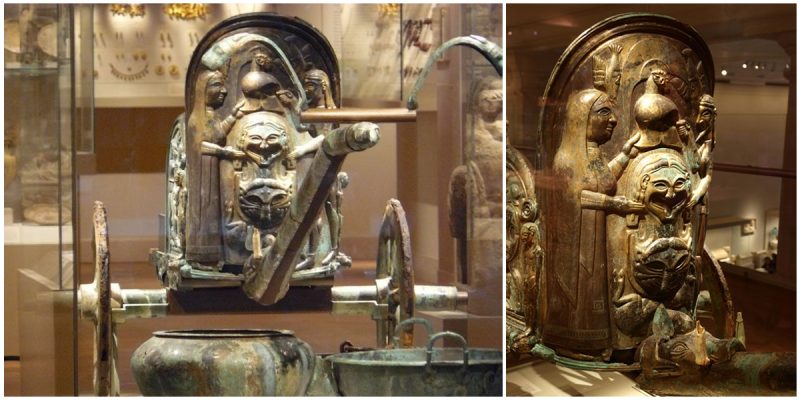Considered one of the world’s great archaeological finds, the Monteleone Chariot is an Etruscan parade chariot dated to the 6th century BCE.
This chariot was accidentally discovered in a tomb in Monteleone di Spoleto, near Spoleto in the province of Umbria, by a shepherd named Isidoro Vannozzi during construction of a farmhouse in 1902. Vannozzi also discovered bronze, ceramic, and iron utensils together with other grave goods.
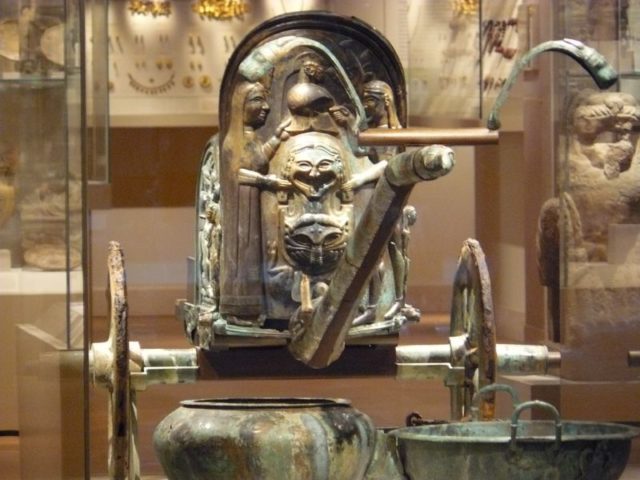
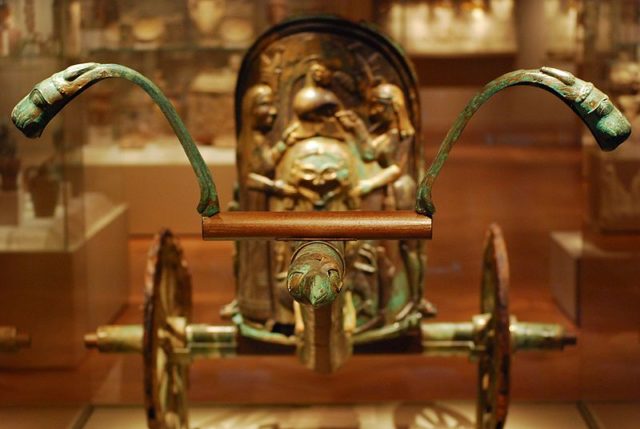
The Shepherd sold the chariot to Benedetto Petrangeli, a local scrap dealer so that he could buy tiles for his roof. According to other accounts, Vannozzi was worried that the authorities might confiscate it, so he hid the chariot in his barn, later sold it to two Frenchmen in exchange for two cows.
Changing hands several times after its initial sale, the chariot was eventually purchased in Paris by J. P. Morgan, an American financier, and banker, who sent it to the Metropolitan Museum in 1903, where its first restoration took place.
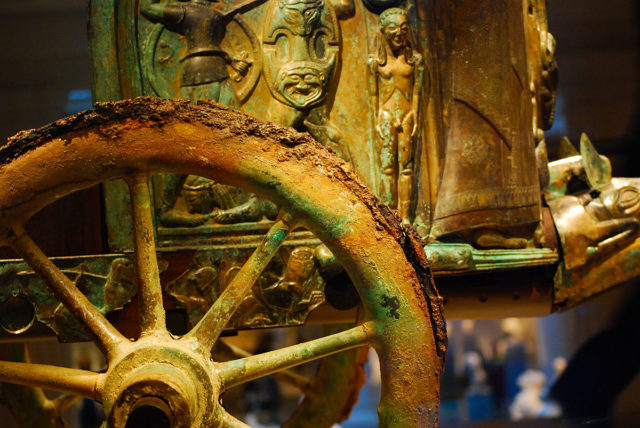
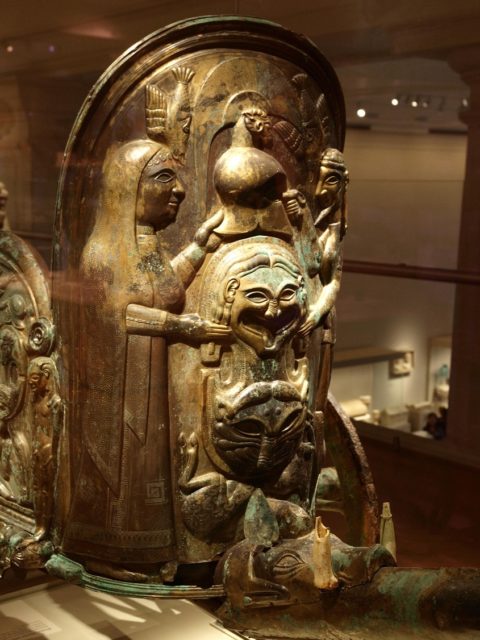
The Monteleone chariot was a two-wheeled vehicle with a horseshoe-shaped car made of wood and covered with panels of bronze, in which the driver and his illustrious passengers stood. Its three bronze panels, which represent the main artistic achievement, are decorated with Homeric iconography showing scenes from the life of Achilles, the Greek hero of the Trojan War. The central panel portrays Achilles’ mother Thetis, presenting her son with a helmet and shield made from the Gods.
The panel on the left shows a combat between two warriors, usually identified as the Greek Achilles and the Trojan Memnon. In the panel on the right, the apotheosis of Achilles shows him ascending in a chariot drawn by winged horses.
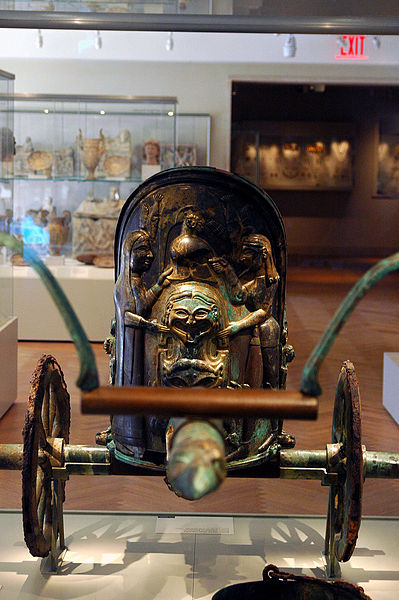
The chariot’s frame and plating is additionally adorned with animals and mythological creatures, rendered in detail. The Etruscans used this chariot as a parade tool, often during a religious or celebratory occasion.
It is the best-preserved and most complete of all known surviving examples. A full-size copy was made in the mid-20th century, which is on display in Monteleone.
